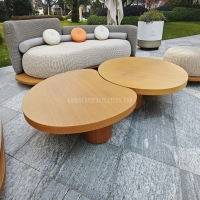Welcome to the website for landscape facilities products and knowledge.
What are the most important factors to consider when selecting a table for a high-noise environment?
Selecting the right table for a high-noise environment requires careful consideration of several crucial factors to ensure both functionality and comfort. The primary element to evaluate is the table's material composition. Opt for surfaces with inherent noise-absorbing properties, such as high-density particleboard or acoustic panels, which can significantly reduce sound reflection and reverberation. These materials help create a more acoustically comfortable workspace by minimizing the amplification of ambient noises.
Another vital aspect is the table's structural stability and construction quality. In noisy settings where vibrations might be present, tables with reinforced frames and sturdy legs become essential. Look for designs that incorporate additional bracing or thicker gauge materials to prevent any resonant vibrations that could amplify existing noise levels. The table's weight and base design also contribute to overall stability, with heavier tables typically offering better vibration resistance.
The table's design and layout should facilitate optimal workflow while contributing to noise reduction. Consider tables with integrated cable management systems to prevent cluttered wires that can contribute to visual and auditory chaos. Additionally, tables with rounded edges and smooth surfaces not only enhance safety but also help minimize sound reflection compared to sharp, angular designs. For collaborative spaces, tables with built-in partitions or sound-absorbing screens can provide both visual privacy and acoustic separation.
Durability remains paramount in high-noise environments, which often correspond to high-traffic areas. Select tables constructed from robust materials that can withstand frequent use while maintaining their acoustic properties. Moisture-resistant and easy-to-clean surfaces are particularly valuable in environments where spills or frequent cleaning might occur. The table's finish should resist scratching and fading, ensuring long-term performance without compromising its noise-reducing capabilities.
Finally, consider the table's ergonomic features and how they interact with the acoustic environment. Adjustable height mechanisms should operate quietly, while any moving parts should feature noise-dampening components. The table's surface area should provide adequate space for equipment while allowing for proper speaker or microphone placement in communication-intensive settings. By addressing these factors comprehensively, you can select a table that not only serves its functional purpose but actively contributes to creating a more productive and comfortable acoustic environment.
Related search:

Recommendation
Elliptical metal outdoor table with nested design, resembling wood grain, round table